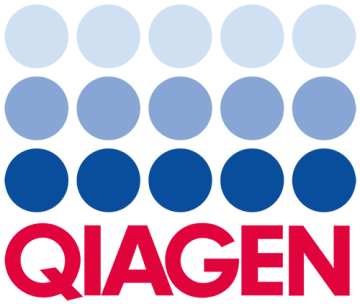
Digital PCR assays for ovarian cancer gene variants
Order ready-to-use dPCR assays
Revolutionizing ovarian cancer research with precision dPCR assays
Ovarian cancer remains a major public health challenge due to its genetic heterogeneity and often late diagnosis. The development of personalized therapies relies on the precise detection and understanding of gene variants involved in the disease. Digital PCR (dPCR) technology, with its exceptional precision and sensitivity, is pivotal for identifying these genetic markers and advancing ovarian cancer research.
Our leading portfolio of dPCR LNA Mutation Assays offers unmatched accuracy, sensitivity and reproducibility, enabling precise detection and quantification of key gene variants. This capability is essential for driving targeted research and developing personalized treatment strategies.
Explore ovarian cancer related dPCR assays by gene
Ovarian cancer's complexity is accentuated by its various subtypes, including epithelial ovarian cancer, germ cell tumors and stromal tumors, each presenting unique genetic markers and treatment challenges. Critical gene variants like BRCA1, BRCA2, TP53 and others play significant roles in the disease’s pathogenesis and influence treatment outcomes. Mutations in these genes help stratify ovarian cancer types and identify potential therapeutic targets.
Our comprehensive suite of dPCR assays equips researchers to delve into these genetic intricacies. The precise detection and quantification of mutations in ovarian cancer-relevant genes enable the exploration of gene-specific dynamics and their implications for therapy and prognosis.
Gene | Mutation Type | Mutation (CDS) | Mutation (AA) | COSMIC ID (COSV) | COSMIC ID (COSM) | Codon | dPCR Mutation Assay |
|---|---|---|---|---|---|---|---|
| PIK3CA | Substitution - Missense | c.1633G>A | p.E545K | COSV55873239 | COSM763 | 545 | DMH0000292 |
| PIK3CA | Substitution - Missense | c.1634A>G | p.E545G | COSV55873220 | COSM764 | 545 | DMH0000033 |
| PIK3CA | Substitution - Missense | c.3139C>T | p.H1047Y | COSV55876499 | COSM774 | 1047 | DMH0000209 |
| PIK3CA | Substitution - Missense | c.3140A>G | p.H1047R | COSV55873195 | COSM775 | 1047 | DMH0000036 |
| PIK3CA | Substitution - Missense | c.3140A>T | p.H1047L | COSV55873401 | COSM776 | 1047 | DMH0000062 |
Discover the QIAcuity family of dPCR instruments
*FDA ‘Medical Devices; Laboratory Developed Tests’ final rule, May 6, 2024 and European Union regulation requirements on ‘In-House Assays’ (Regulation (EU) 2017/746 -IVDR- Art. 5(5))
Frequently asked questions
How do dPCR LNA Mutation Assays benefit cancer researchers?
What is the role of ARID1A in the behavior of ovarian cancer?
How does the BRCA1 gene contribute to ovarian cancer development and progression?
In what way does the BRCA2 gene influence hereditary ovarian cancer?
How are CHEK2 mutations linked to ovarian cancer susceptibility?
How do KRAS mutations affect ovarian cancer development?
What impact do PIK3CA mutations have on ovarian cancer?
What effect does the PTEN gene have on ovarian cancer development?
What role does the TP53 gene play in ovarian cancer?
How does the ERBB2 (HER2) gene impact ovarian cancer progression and treatment?
What role does the ERBB3 gene play in ovarian cancer cell signaling pathways?
Disclaimers
dPCR LNA Mutation Assays are intended for molecular biology applications. These products are not intended for the diagnosis, prevention, or treatment of a disease.
The QIAcuity is intended for molecular biology applications. This product is not intended for the diagnosis, prevention or treatment of a disease. Therefore, the performance characteristics of the product for clinical use (i.e., diagnostic, prognostic, therapeutic or blood banking) is unknown.
The QIAcuityDx dPCR System is intended for in vitro diagnostic use, using automated multiplex quantification dPCR technology, for the purpose of providing diagnostic information concerning pathological states.
QIAcuity and QIAcuityDx dPCR instruments are sold under license from Bio-Rad Laboratories, Inc. and exclude rights for use with pediatric applications. The QIAcuityDx medical device is currently under development and will be available in 20 countries in H2 2024.


